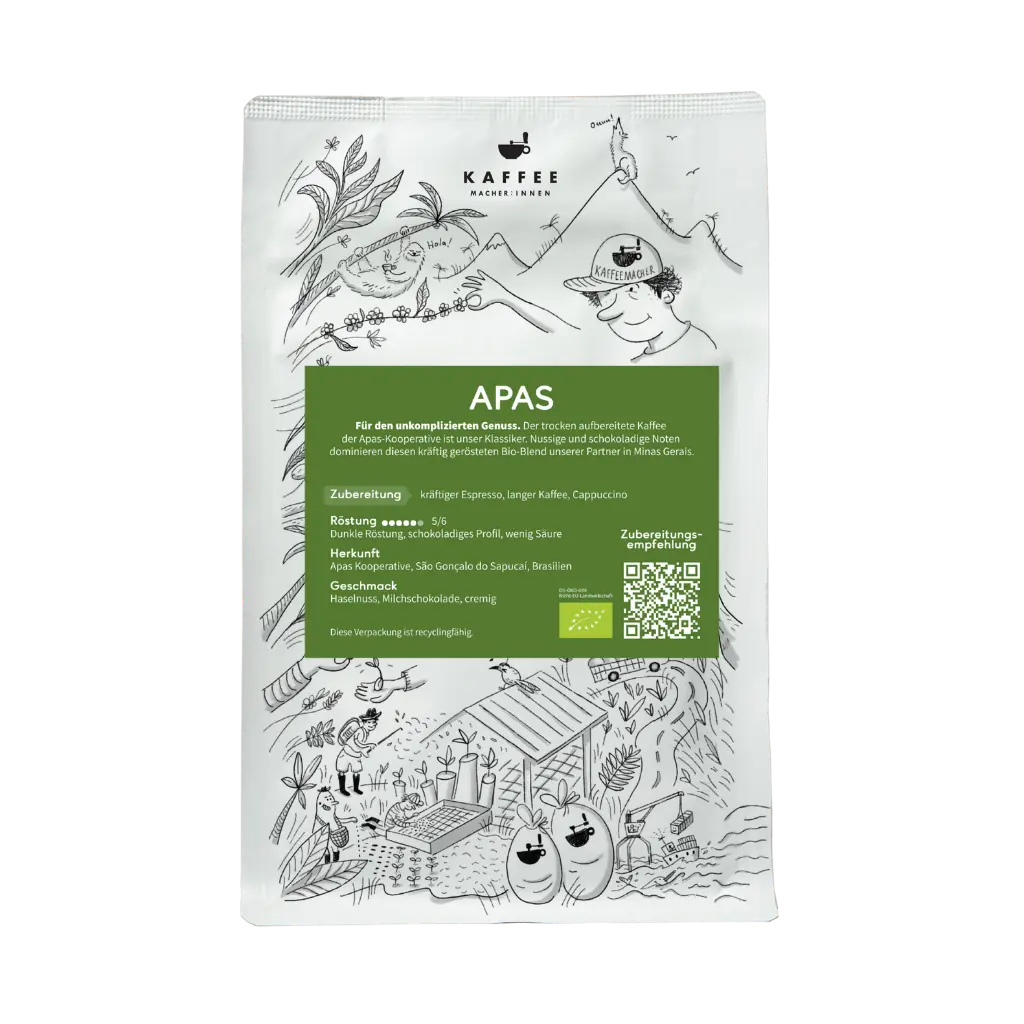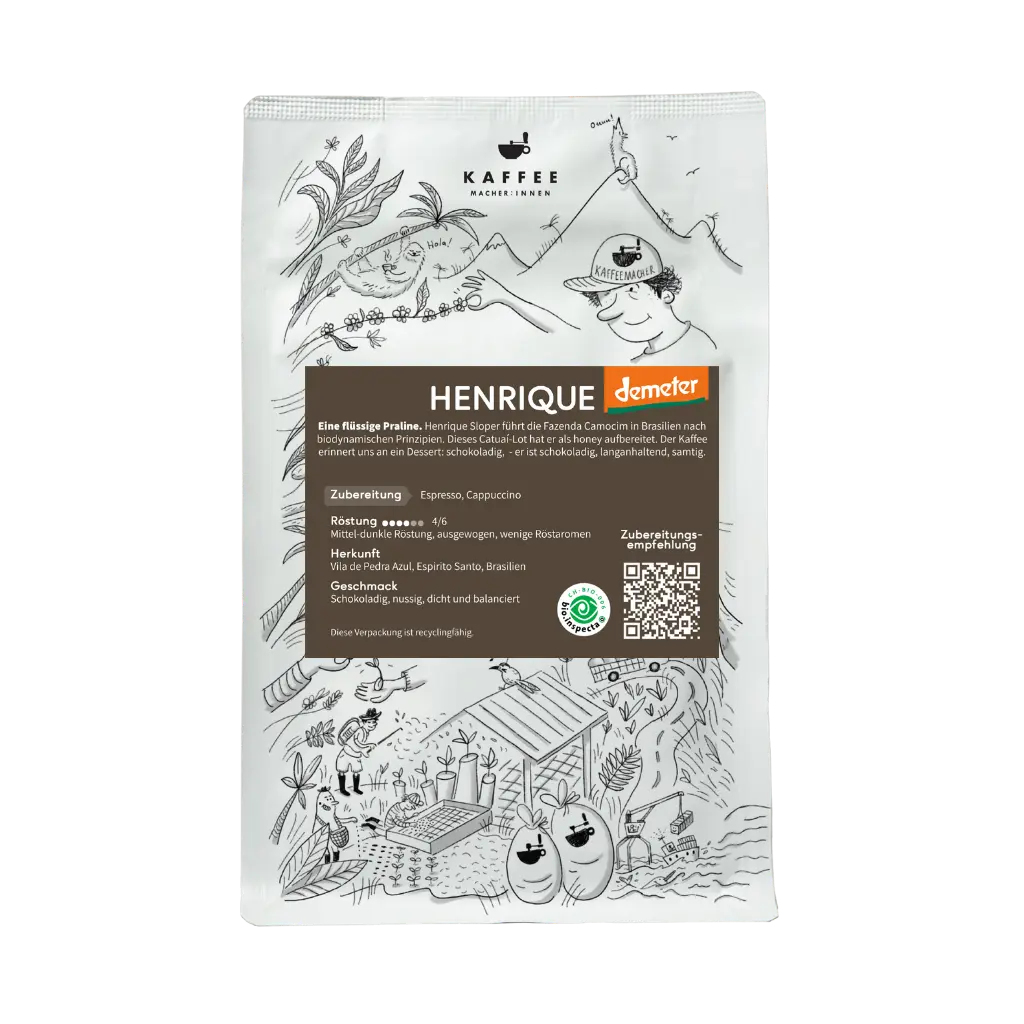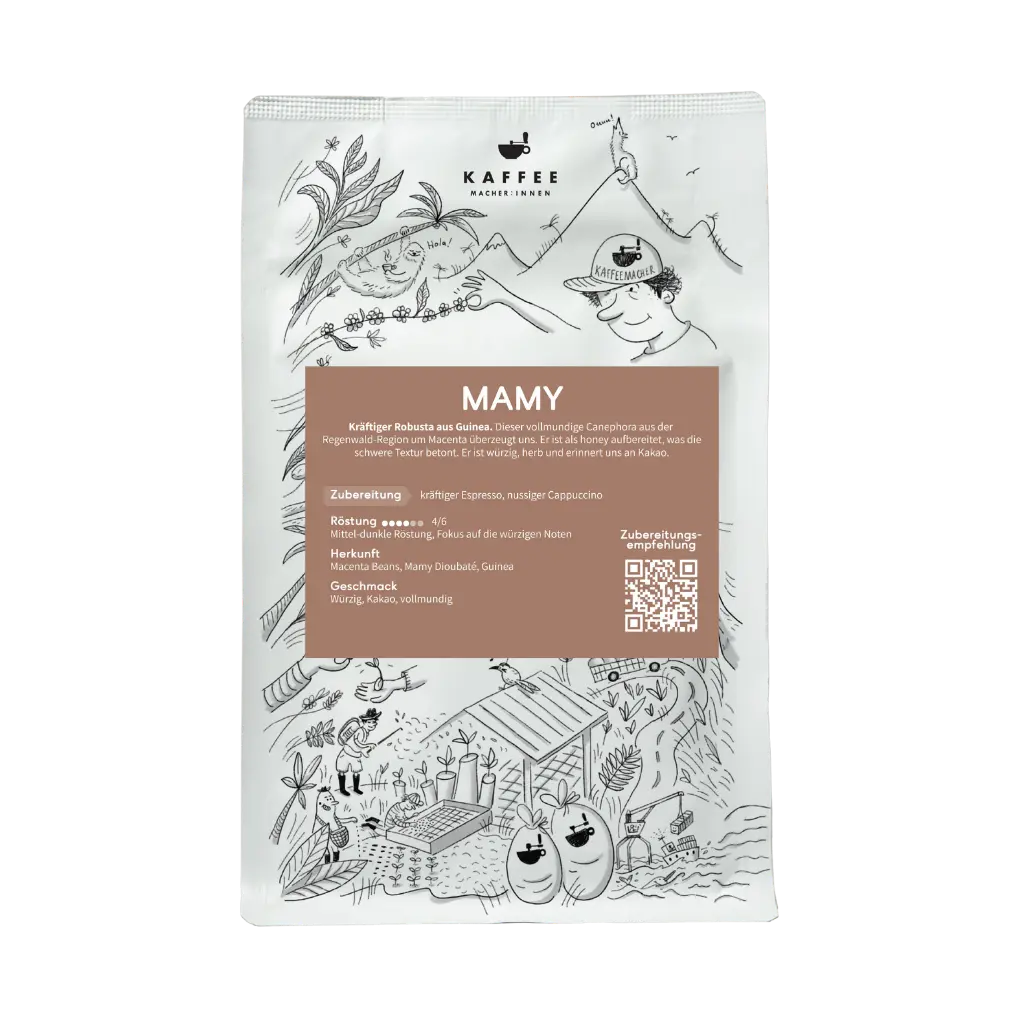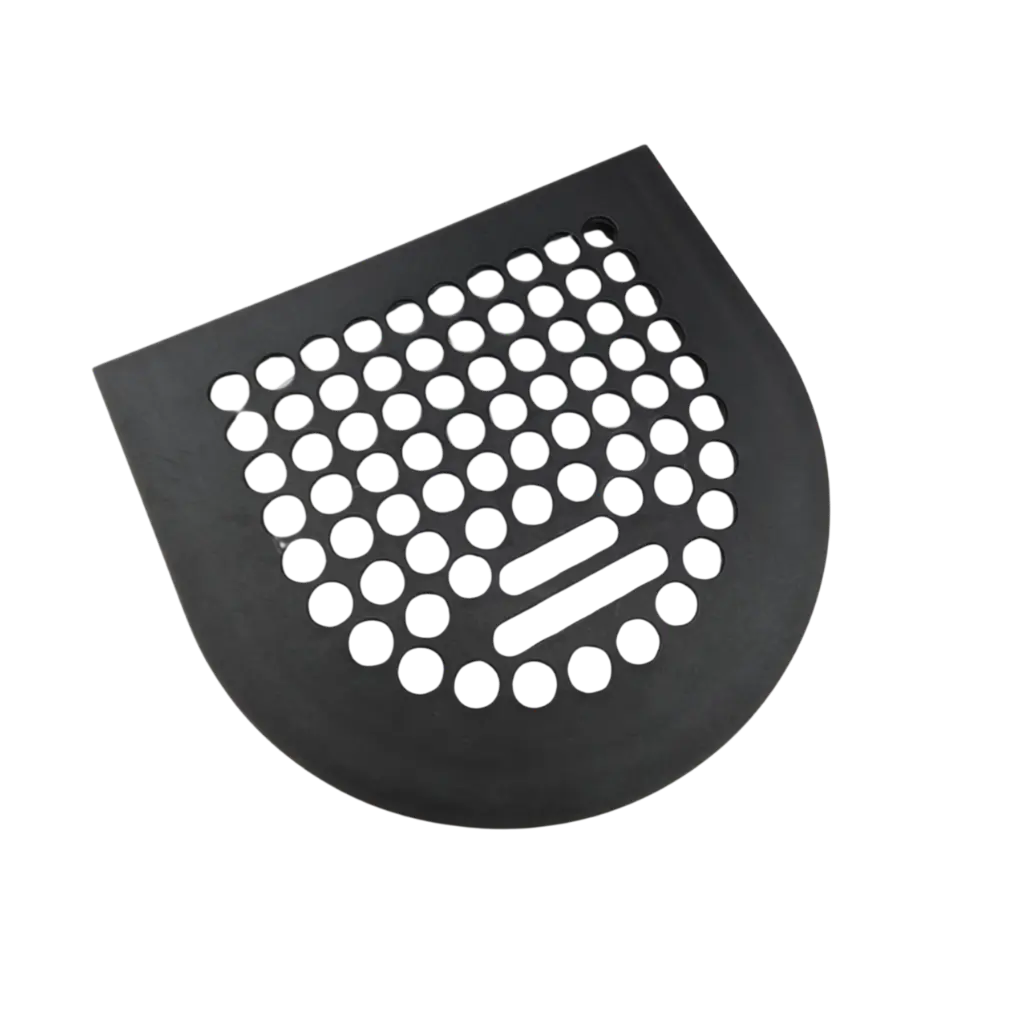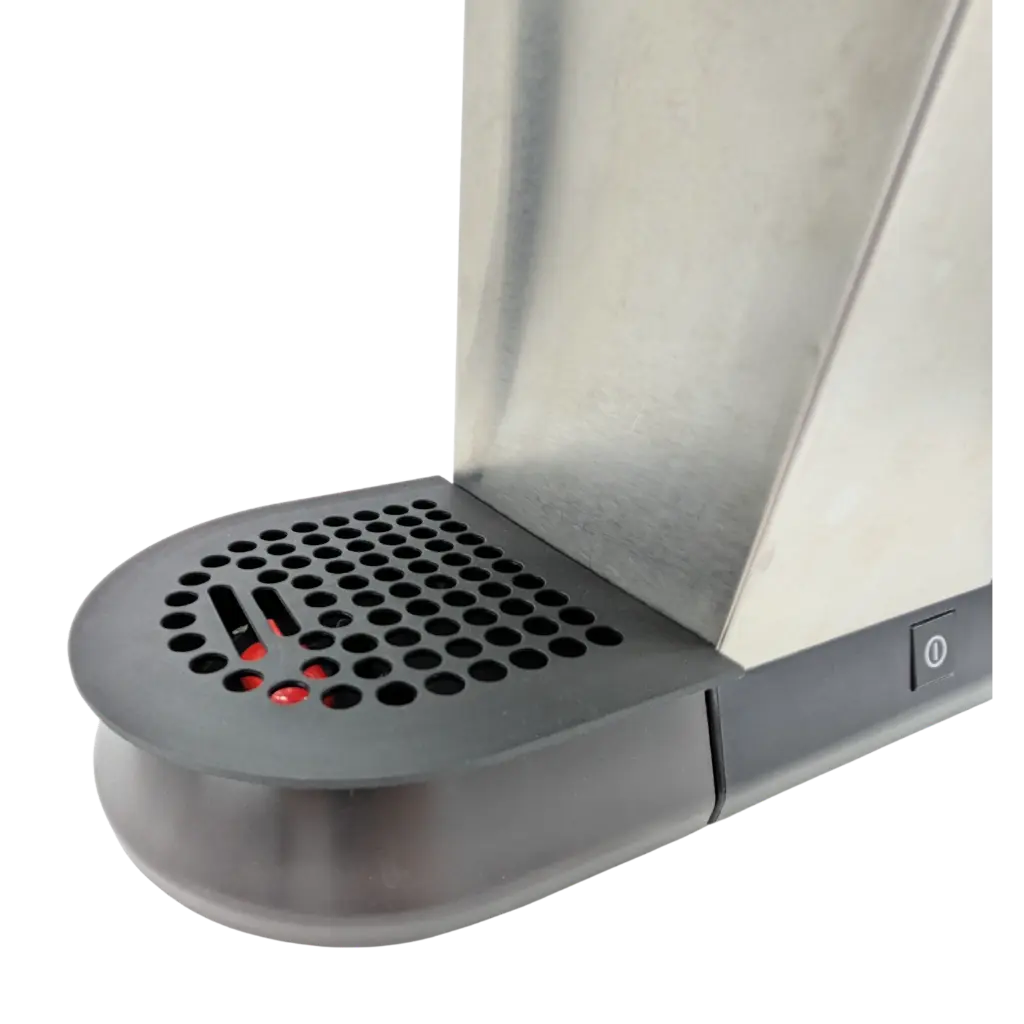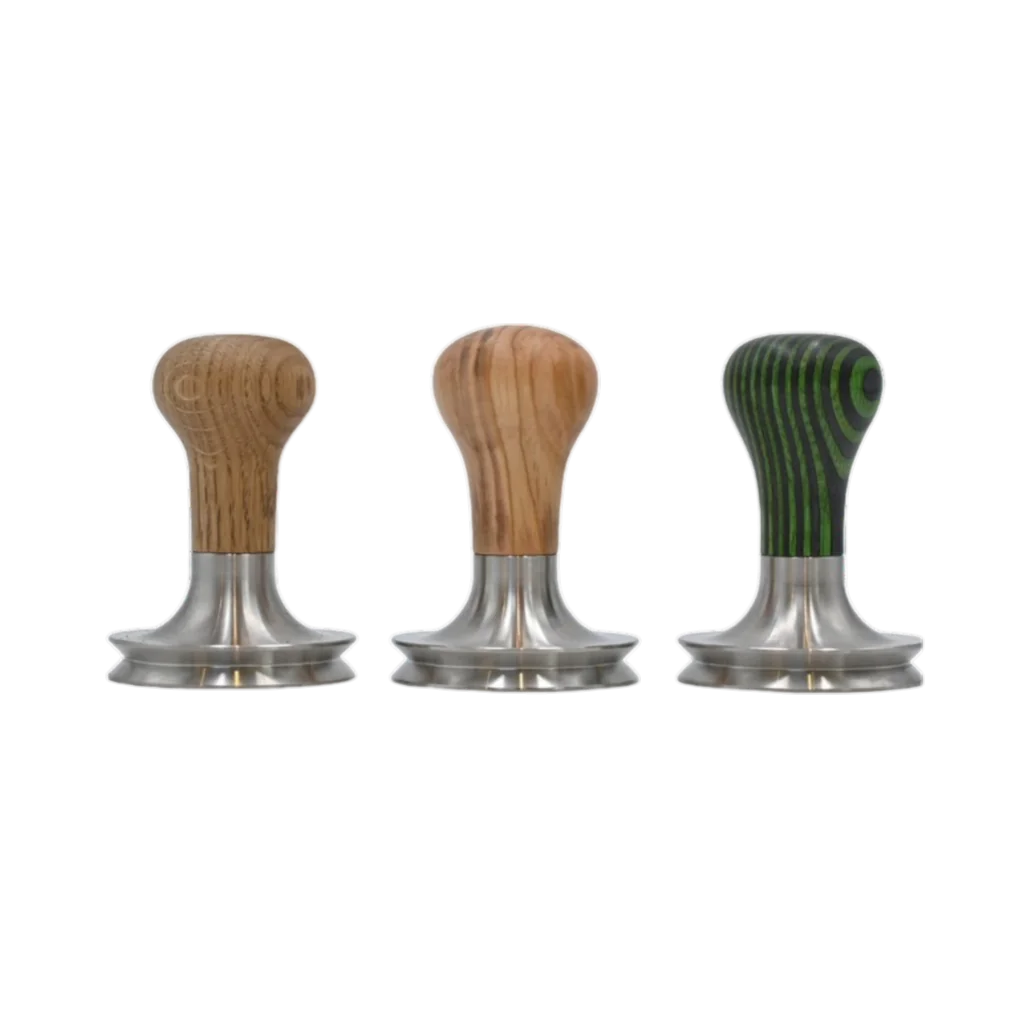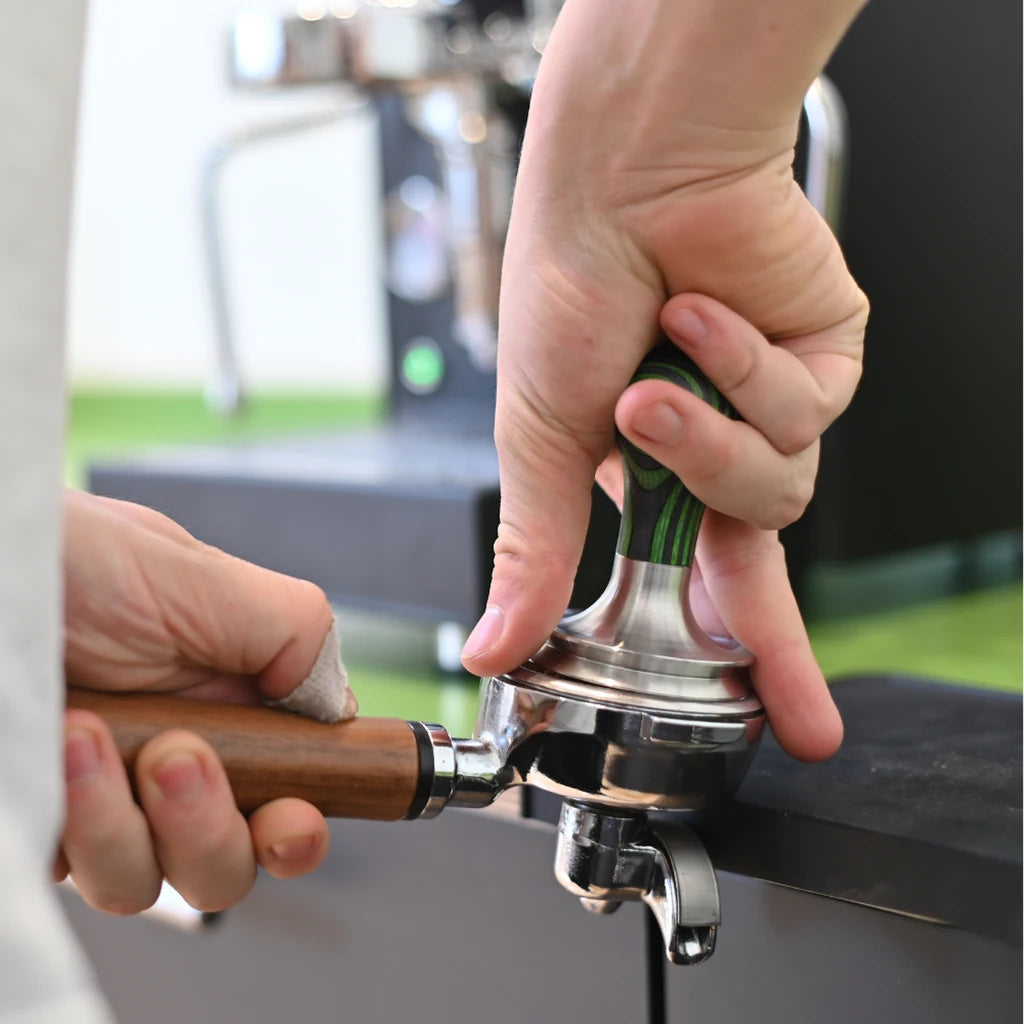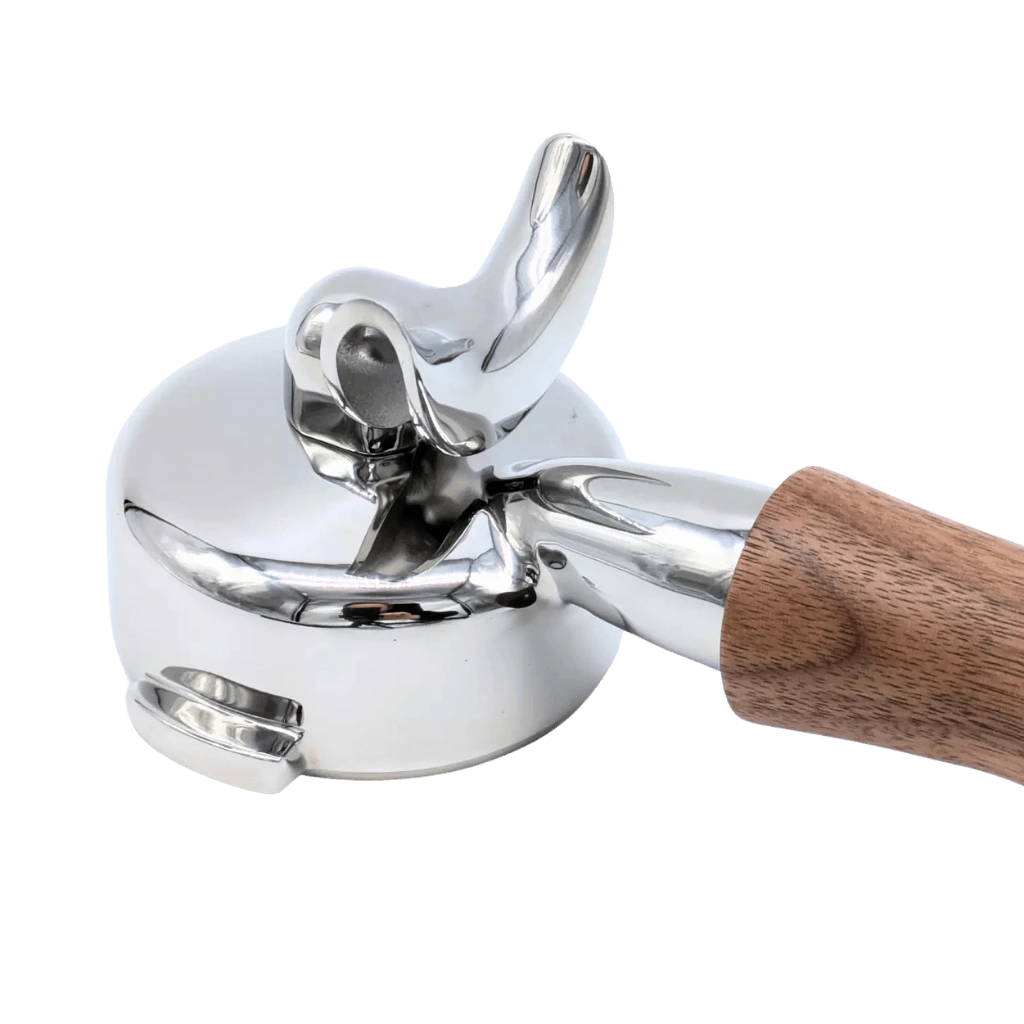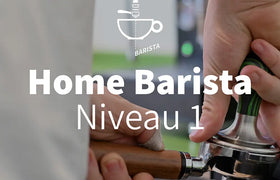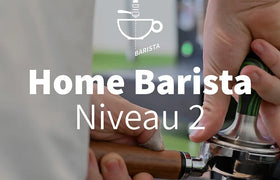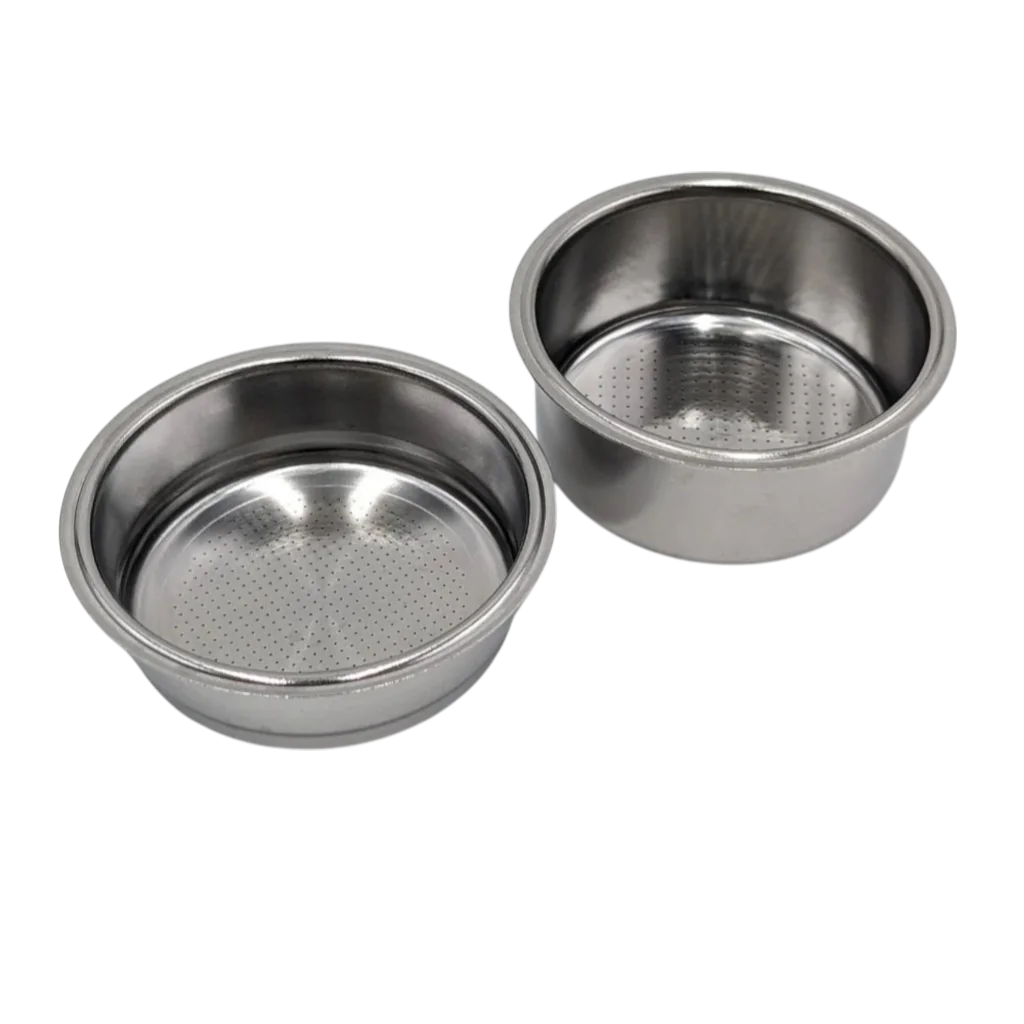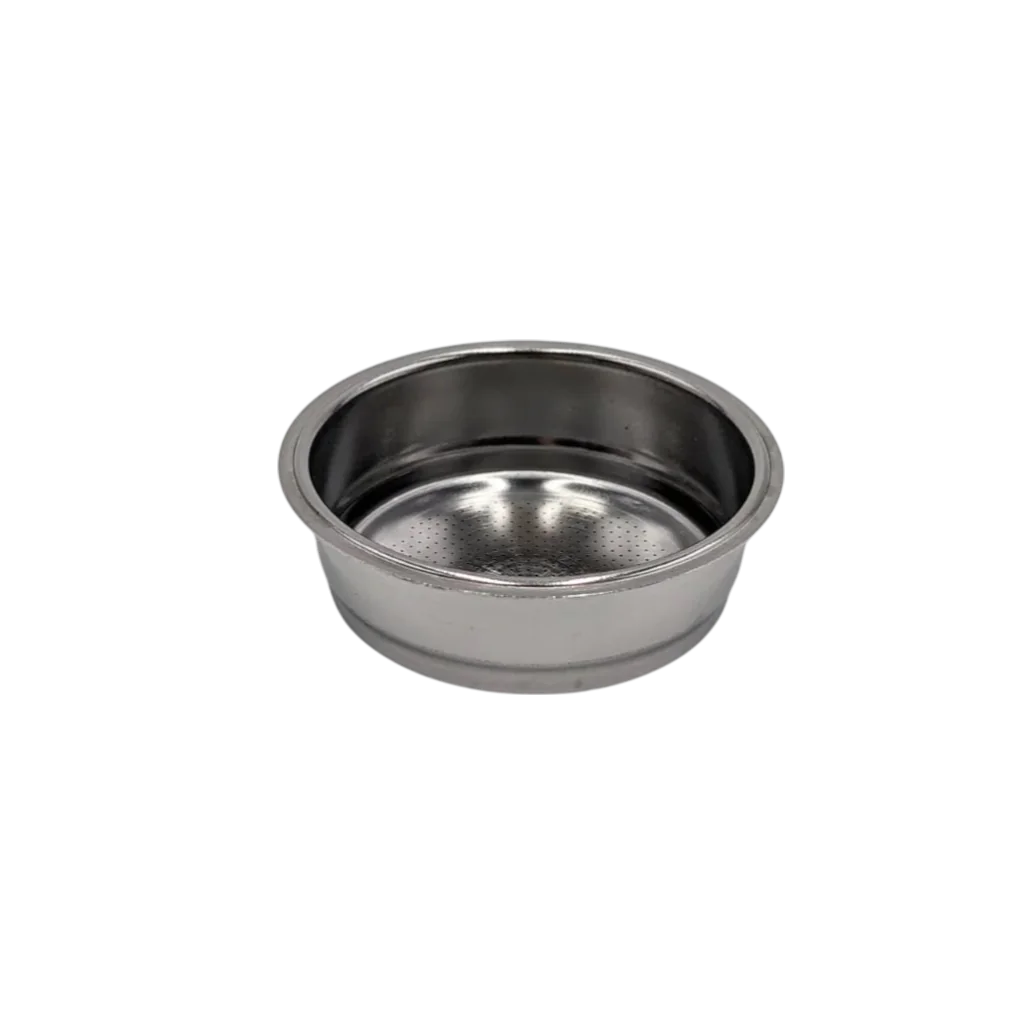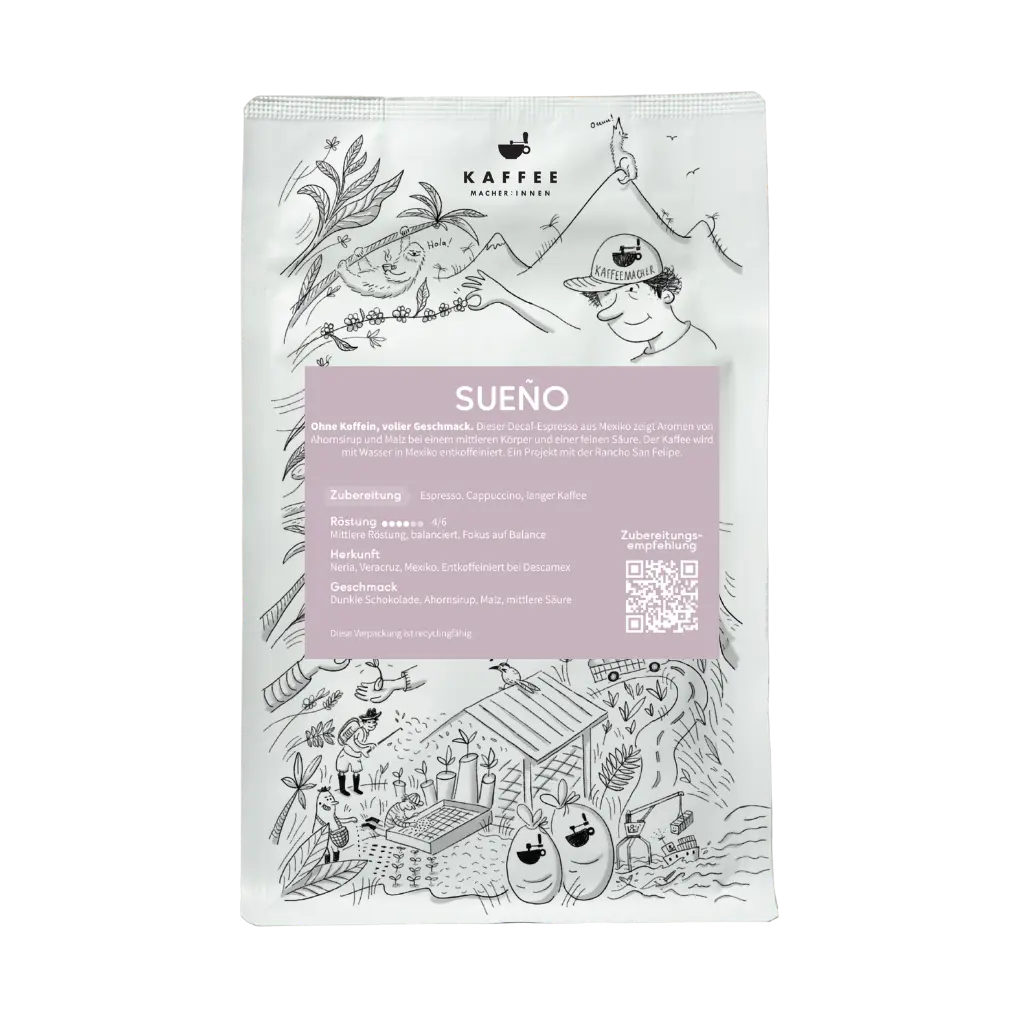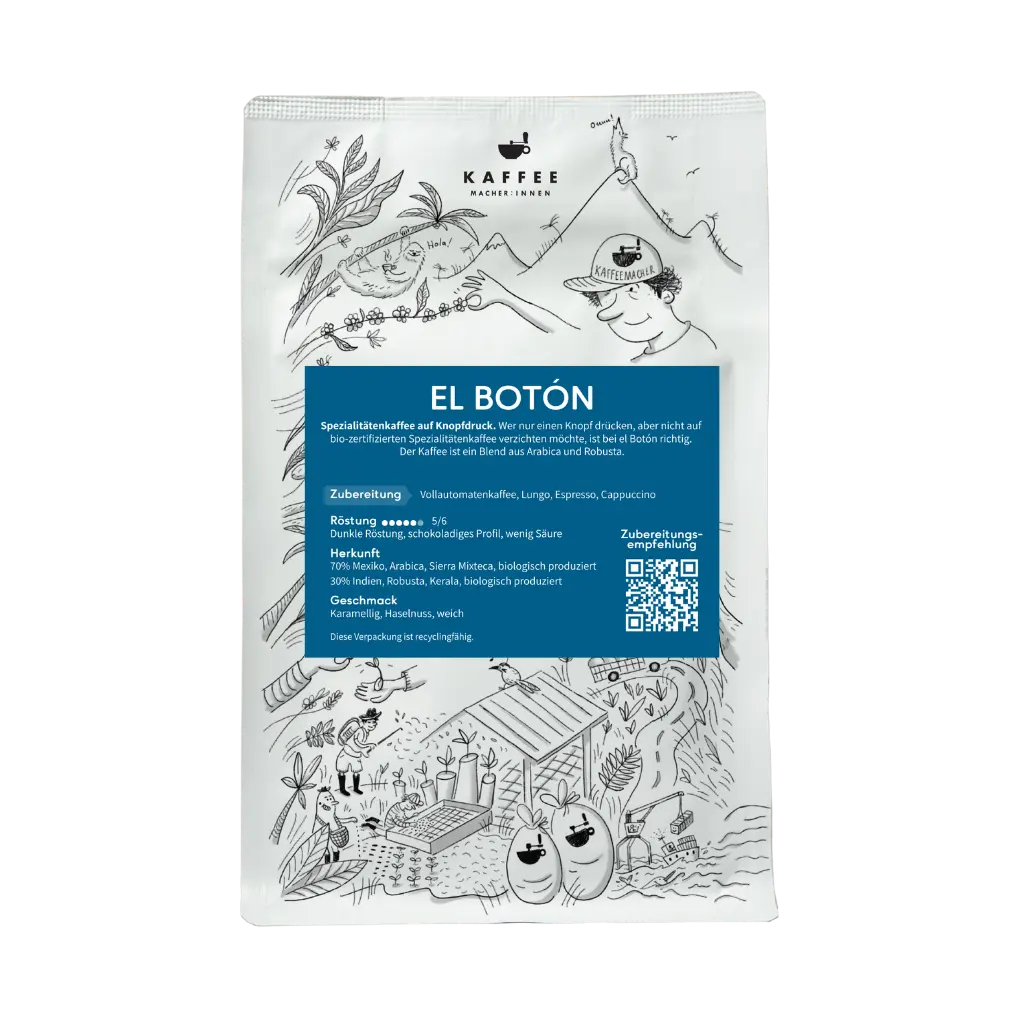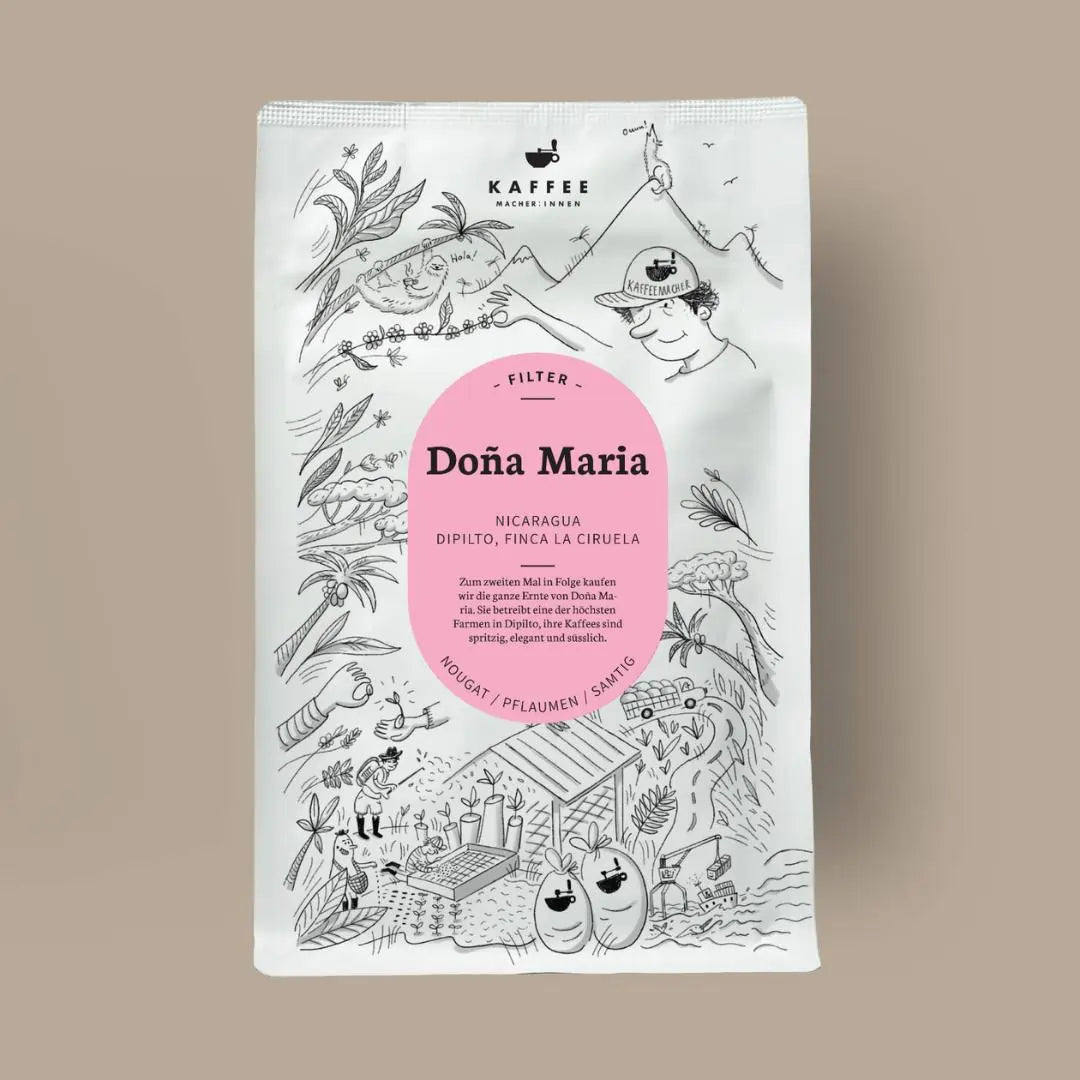

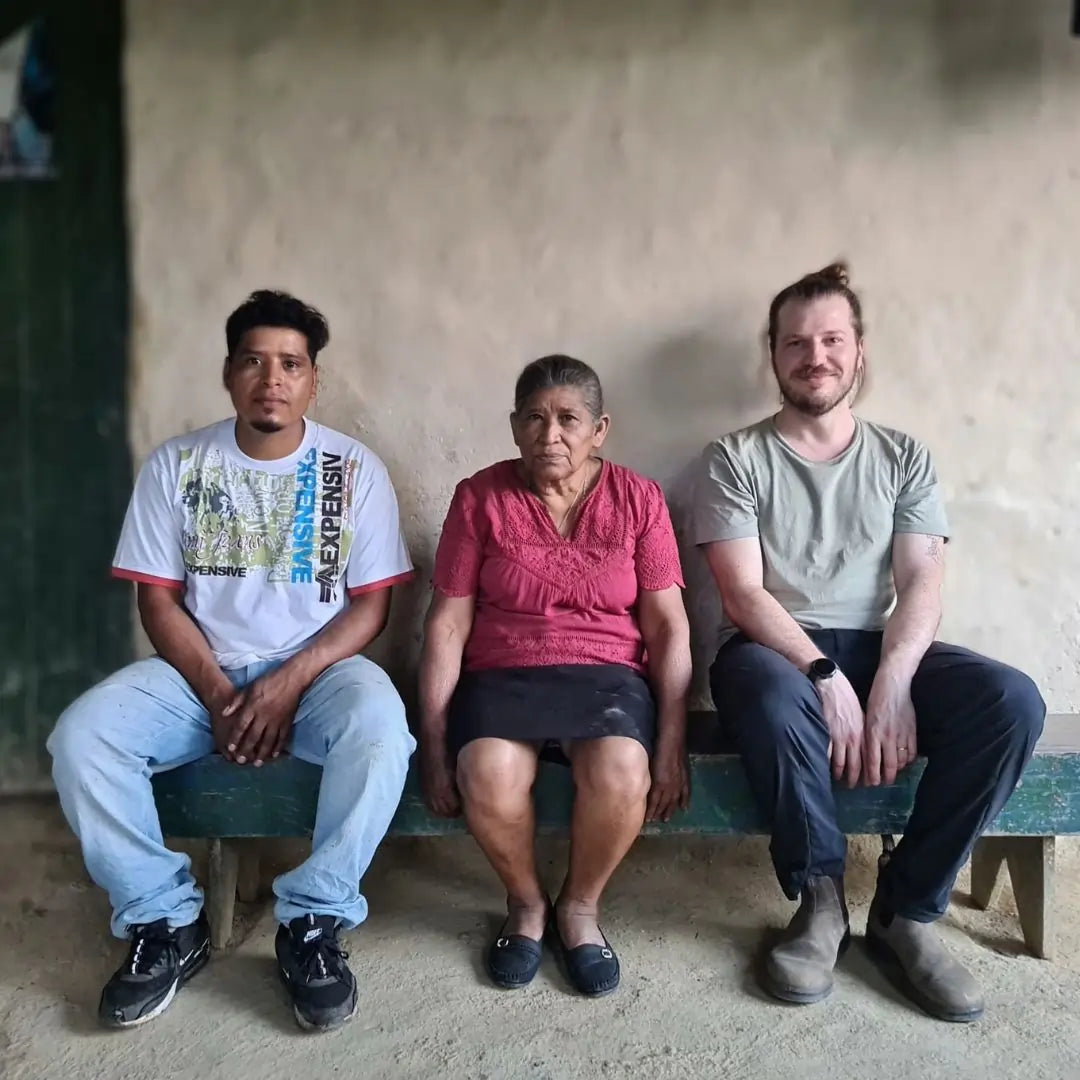
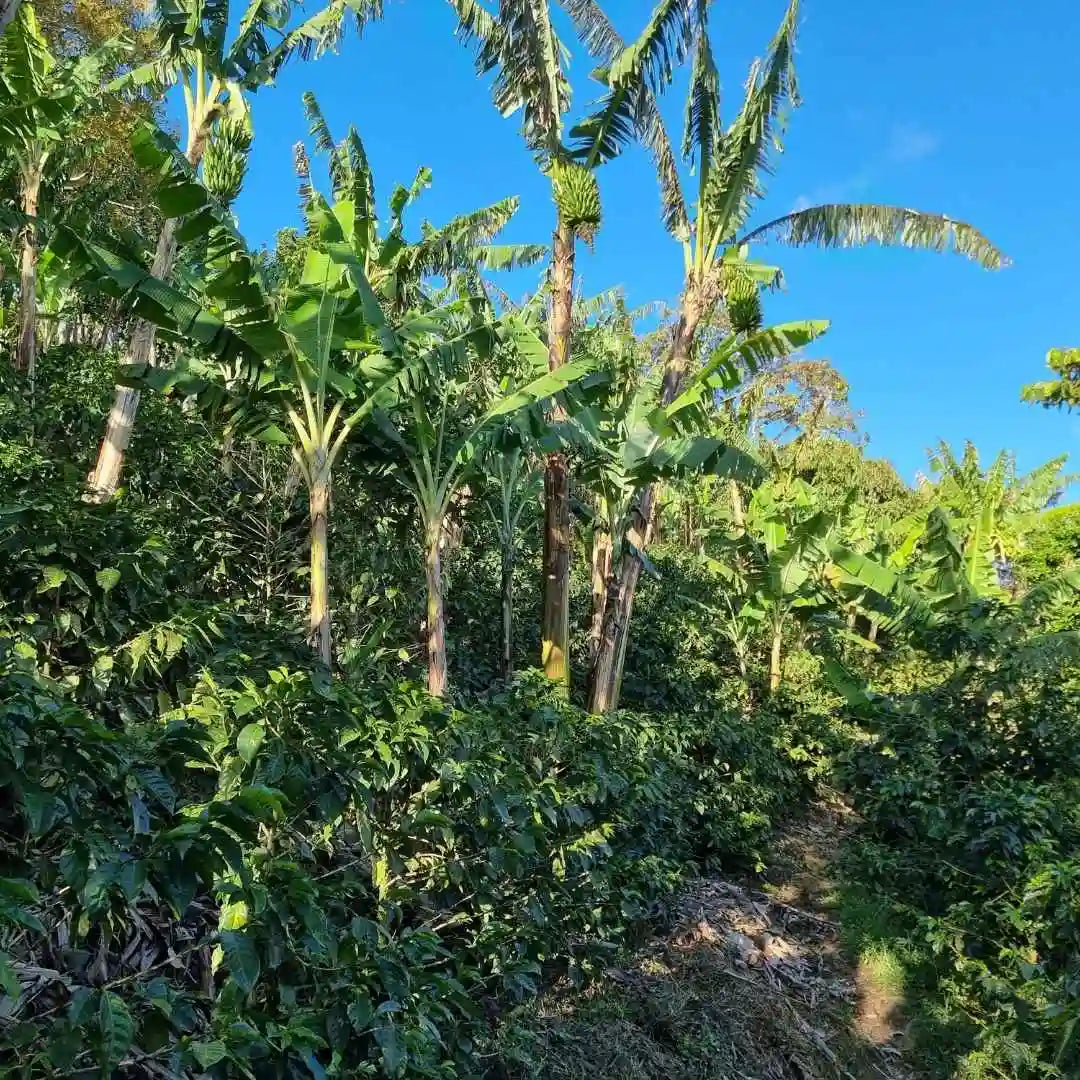
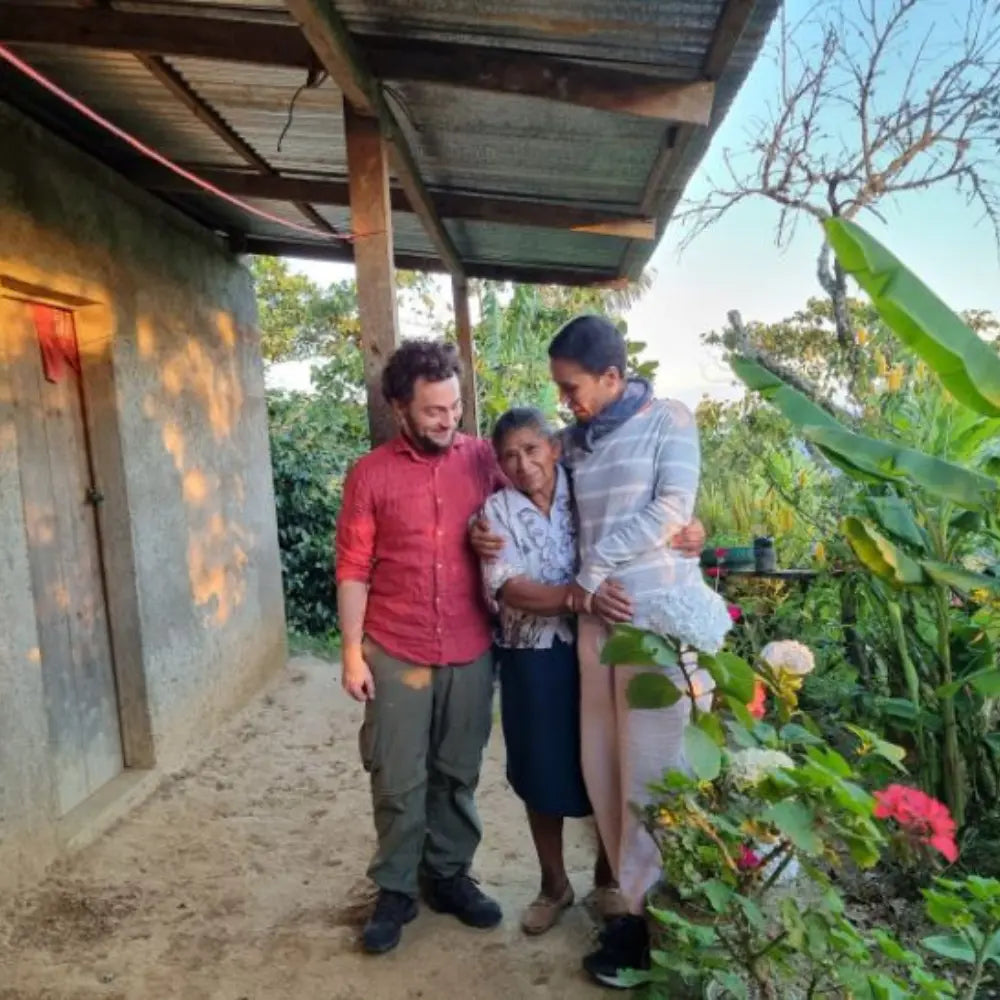
Doña Maria, filter coffee from Nicaragua
Doña Maria - filter coffee from Nicaragua
In 2023, Doña Maria sold her coffee for the first time to someone she knew: us. This year, we were there again and purchased the entire harvest. Her farm is one of the highest in Dipilto, and her washed Caturra tastes of nougat and prunes to us. The texture is velvety, and the acidity is delicate.
Doña Maria - Coffee Information
Roasted for : all common filter methods such as: hand filter, AeroPress, French Press
Origin : Finca La Ciruela, Dipilto, Nicaragua
Producer : Doña Maria
Arabica varieties : Caturra Amarillo and Caturra Rojo
Post-harvest process : washed - the coffee cherries were pulped, fermented without water in a covered concrete tank for 36 hours, then washed and dried.
Arrived at the roastery: September 2024
Brewing recommendation Doña Maria by David in the Hario Switch
| Amount of coffee | 17 grams |
| Total amount of water |
250 grams |
| Grinding degree | 4.9.0 |
| Age of roasting | 10 days |
| Water temperature |
89 degrees |
| Blooming |
50 grams (30 seconds) |
| Brewing time |
2:30 |
| Infusions | 0:00 50g (valve closed) 0:30 Open valve & pour to 150g 1:30 Close valve & pour to 250g 1:50 Open valve |
David used the following equipment to develop the recipe:
Water: Total hardness 3 °dH , alkalinity 1.5 °dH (more on the topic of coffee water )
Mill: Kinu M47 Classic
Tell me more about Doña Maria
Doña Maria is 65 years old and runs a small farm in the far corner of Dipiltos, on the border with Honduras. The farm is 1 manzana, or approximately 0.7 hectares. Doña Maria has spent her entire life on the farm and has taken great care of Finca La Ciruela. Benjamin and Philipp both visited and were impressed. The farm is 1,300 meters above sea level and surrounded by plum trees, hence the name: La Ciruela. Doña Maria's son, Donal, helps his mother maintain the finca.
Why did we buy this coffee?
In February 2023, Claudia calls us and says they're now working with Doña Maria and want to give her access to a new market. Would we like her coffee? Without knowing what it tastes like, we agreed. Doña Maria has never been able to sell her coffee directly; for more than forty years, her coffee has been blended. And if Claudia senses this could be a long-term story, we believe her. In 2023, we'll buy half of her harvest, and in 2024, the entire volume.
Why does coffee taste the way it does?
Doña Maria's farm is located very high in Dipilto. When Philipp visited in the spring of 2024, there was an acute water shortage and a risk of forest fires in Dipilto. Neither of these issues affected Doña Maria. At this altitude, they experience a lot of morning mist, and the clouds accumulate on their hillside, so there is always enough moisture for the coffee trees. The slow growth results in dense beans and a juicy, delicate, yet clear acidity, with plenty of sweetness. The post-harvest washing process intensifies these notes. Doña Maria's coffees are very well sorted and are an example of how precise handcrafting has a direct influence on the flavor.
How do we roast this coffee?
As a 12.5kg batch on our 30kg roaster, we roast the coffee thoroughly at 9:10, with a development time of 60 seconds. At 4 minutes, we reduce the gas supply slightly, before significantly reducing the heat at 5:30, bringing the coffee to its first crack at a moderate pace.


Guaranteed origin
We know exactly where our coffee comes from and when and where it was roasted.
Free shipping in Germany from 75€
Personal advice
We are here to help you with any questions or problems.
Fast shipping
Delivery from Germany or Switzerland



